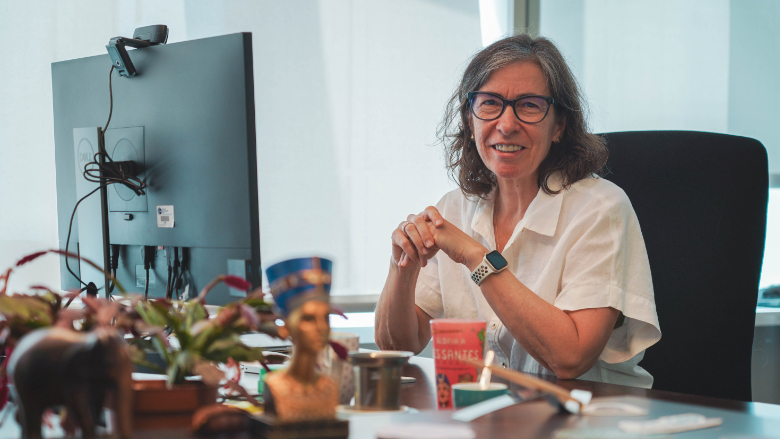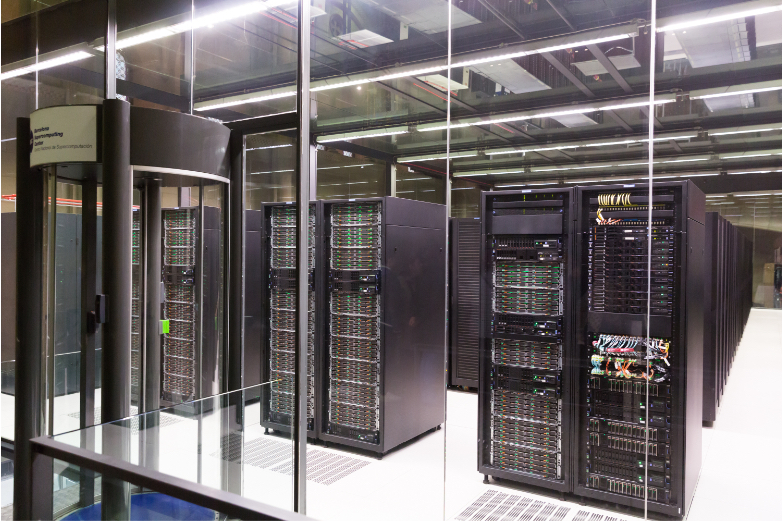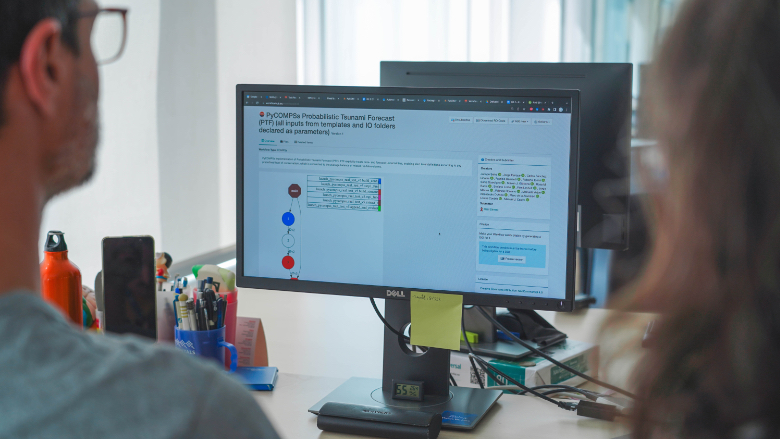She is committed to developing tools that make supercomputers easier to use for researchers in different fields (such as biologists, chemists, astronomers, physicists and engineers). Rosa M. Badia (Mataró, 1966) is nothing less than a great communicator of supercomputing. Although it is a complex field in itself, helping other scientists to understand and apply the possibilities of supercomputing in their respective fields is an achievement and also a crucial task in view of the future that awaits us with the application of artificial intelligence (AI) to practically all jobs, everyday life and all fields of research.
“Supercomputers are very powerful machines, let’s call them super-machines, that contain thousands of processors, or brains, working simultaneously to solve problems, whether it’s climate change, the search for new medicines, energy sources, or understanding the universe,” explains Badia, who heads the Workflows and Distributed Computing group at the Barcelona Supercomputing Center (BSC).

And to solve the problems they are tasked with, “these machines break down large-scale computations into smaller ones that are executed simultaneously on different processors and linked together in what is known as parallel or distributed computing,” summarises the researcher.
“All the complexity of the MareNostrum supercomputers needs to be made easier so that any researcher can use these capabilities to carry out their research”
To give us an idea of the scale of this field, Badia says that the MareNostrum 5 supercomputer (currently under construction at the BSC in Barcelona) will have almost one million processors, some of them more powerful than the entire MareNostrum 1 supercomputer, installed in 2005. “All this complexity requires us to facilitate the work, so that any researcher, whether a biologist, chemist, astronomer, physicist or engineer, among others, can use these unique capabilities in Spain to carry out their research,” she explains.

The scientist adds that in recent years, “the programs that run on these super-machines are not limited to just performing a large number of calculations to simulate or model objects or natural phenomena, but are also combined with the use of AI to speed up the time needed to obtain the results of the programs or to get complementary results.” This adds to the complexity of these machines and their use.
“These machines are not limited to just performing a large number of calculations but are also combined with the use of AI to reduce the time it takes to get the results.”
And she gives an example of such combined use. “In the eFlows4HPC project, the results of traditional supercomputing simulations are combined with artificial intelligence techniques to produce maps of the expected impact of earthquakes more quickly, or to reduce the time needed to predict the future evolution of the climate.”
The result of her group’s research is called COMPSs: “It’s like an orchestra conductor able to coordinate a large number of instruments playing at the same time to produce a harmonious melody.”
But what exactly is her group working on? The programming environment resulting from her group’s research (called PyCOMPSs/COMPSs) divides the program into several tasks and is able to detect which of them can be executed at the same time and which cannot, using thousands of processors in the supercomputer and autonomously managing all the data accessed by the program. She explains it clearly: “COMPSs is like an orchestra conductor able to coordinate a large number of instruments playing at the same time to produce a harmonious melody.” This tool has already been used in more than 30 scientific projects, and has been fundamental to scientific discoveries, such as understanding the relationship between genetics and type 2 diabetes, or discovering new clusters of galactic objects in the Milky Way.
This research has enabled, for example, the simulation of COVID-19 propagation scenarios in the Madrid metropolitan area.
Rosa M. Badia says that applications of supercomputing are very broad. Some of the most outstanding results of this research have enabled, for example, the simulation of COVID-19 propagation scenarios in the Madrid metropolitan area, and the modelling of hydrogen production from biomass, which could contribute to a more sustainable future. But that is not all, as the applications of this technology are, paradoxically, almost incalculable: “Current topics under study are, for example, the creation of local climate and air pollution scenarios to understand the impact of global climate in real cities and regions; pioneering studies of protein interactions between proteins at the atomic level; and research into the electromechanical activity of human atria and ventricles, which would allow us to understand cardiac activity and pathologies.”
Bachelor’s degrees are emerging in areas such as data science and engineering, artificial intelligence, and bioinformatics to meet the future demand for work in the field of supercomputing.
In terms of the most promising professions related to her field, Badia highlights the emergence of bachelor’s degrees in data science and engineering, artificial intelligence, bioinformatics (a discipline at the crossroads of computer science, biomedicine, physics and chemistry) and the master’s degree in artificial intelligence.

This brilliant scientist’s goal for the coming years is “to achieve greater adoption of the tools our team develops by the scientific community in general.” “For example, we are very excited about the possibility of using PyCOMPSs/COMPSs in the European DT-GEO project, which will use supercomputers to build digital twins of extreme geophysical phenomena in order to analyse and predict tsunamis, earthquakes and volcanic eruptions. Another project is CAELESTIS, in which we are looking at the generation of the aircraft of the future, safer and with fewer emissions into the environment.”
Comments on this publication